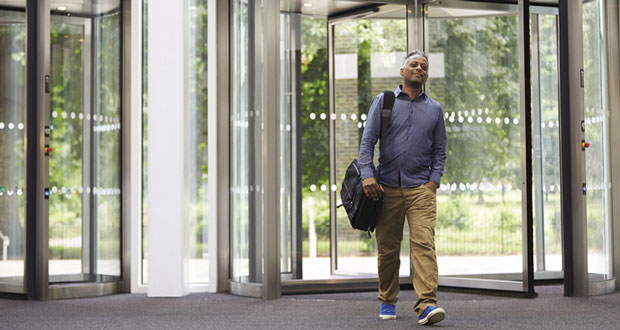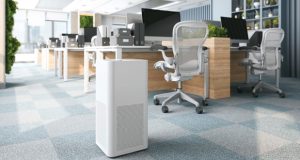This free to attend online event from the Workplace Futures conference team deftly pinpointed some key challenges for FMs in managing the widescale return to the workplace
As Chair of the conference Martin Pickard noted in his introduction to inaugural speaker Tim Oldman of the Leesman Index, “it’s a fascinating time to be in FM, but for those of you managing offices there’s a lot of conflicting noise out there”. There certainty is, for as Oldman pointed out, there’s never been as much coverage by the mainstream media on the future of the workplace, much of which is alarmist or inaccurate. Ably utilising Leesman’ data, Oldman’s presentation helped to paint a more accurate picture.
He began however with a message to FMs that while CEOs are finally sitting up and taking notice of the important role played by the workplace, FM is in danger of squandering this opportunity if global HR takes over responsibility. He warned that the facilities management sector needs to urgently establish its purpose, role and mission, which is to enhance the employee experience. There’s still much to be done. Leesman research found that nearly two thirds (64 per cent) of organisations have yet to communicate their post pandemic workplace strategies.
Next, Hannah Nardini of Wkspace offered some useful advice on implementing a successful return to work strategy. While remote working has succeeded in keeping organisations functioning, the cracks she said are beginning to appear, with people craving the feeling of connection only a workplace can provide. Nardini acknowledged that hybrid working models are here to stay, which she said will require organisations to instigate longer term real estate strategies. The layout of the workplace has irrevocably changed; and with fewer people anchored to a desk and increased demand for collaboration opportunities, she forecasts a reduction in formal desking in favour of more ‘dynamic’ spaces.
PEOPLE AND PLACE
Taking up the theme of people and place, the CIPD’s Head of Policy Ben Willmott and its Labour Market Economist Jon Boys revealed that workplace occupation is projected to return to pre-pandemic levels by the end of this year. However, alongside this the data indicates that two thirds of employers are planning on expanding or introducing hybrid working over the next 12 months.
Craig Butt of ENGIE expanded on the need for FM to take a people centric approach, which is why the sector needs to concentrate on offering inspiring and motivational spaces. While sustainable remits such as meeting carbon reduction targets hasn’t diminished, for FMs post-pandemic the focus is on looking after people, rather than simply looking after buildings he said. Going forward, supporting the health, happiness and performance of users will be paramount.
Putting the notion of people and place into real life practice, Wes Montgomery of CBRE and Neil Edmond, Director of Workplace at BT presented an interesting case study on the measures BT has taken to attract staff back into the office by providing the best possible workplace experience. As they surmised, never before has it been so important that FM suppliers and their client’s share with users what they’re doing, why they’re doing it and what they’re doing to keep people safe.
BUILDING ENVIRONMENT
The conference didn’t stint on offering some vital pointers on the health and safety aspects in overseeing a mass return to work. Mark Crossley, Operational Policy Advisor at the Health & Safety Executive presented a comprehensive overview of the multitude of issues to keep in mind when reopening the workplace; from access to hand cleaning to ventilation quality.
On this point it was also useful to hear some expert advice from Graeme Fox, Head of Technical for the BESA (Building Engineering Services Association) on the importance of ventilation. He included a useful reminder that the quality of the air that we breathe is important for health and wellbeing of occupants all of the time and not just to help prevent COVID.
Earlier in the day Nardini predicted that catering will play a major role in promoting engagement, with workplace baristas and coffee points all being ramped up to help make the office a destination of choice. While providing quality food and drink was always its aim, following the pandemic said Harpreet Cheema of Sodexo, the catering and services sector has to think differently and creatively about the services it provides and ways to further support clients. He noted that during the last 18 months there has been a seismic shift in how we work and we’re now in a pivotal moment in the evolution of the workplace. This generates huge opportunities for those willing to grab it which is why as an industry FM cannot afford to stand still.
Nicola Gillen of Cushman & Wakefield specialises in the relationship between design, people, behaviour and the built environment and her belief is that while COVID was a catalyst for hybrid working it is not a cause. Employees have been agitating for flexible working for a long time, but the key change is that the C suite is now listening and HR are engaged with the idea. This may result in a need for a reduction in the amount of commercial office real estate but that which is provided will need to be of higher quality in terms of both buildings and their location.
A return to work presents us with an opportunity to listen to every individual’s needs and utilise it to help determine the future of the workplace, said Dan Guest of Mitie – who asked FMs to consider, ‘how can you make a difference to make your people feel safe and confident?’ His views reflected the overall theme of the day that FM has finally got a prime place at the table and it must be careful not to lose that opportunity. It’s a message that the sector would do well not to ignore.





